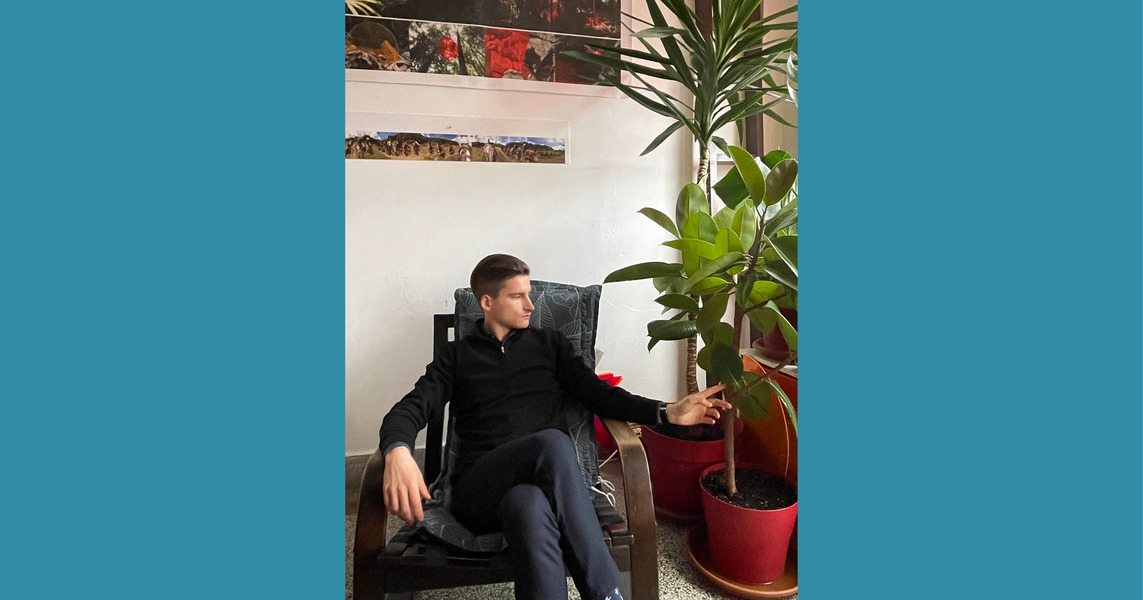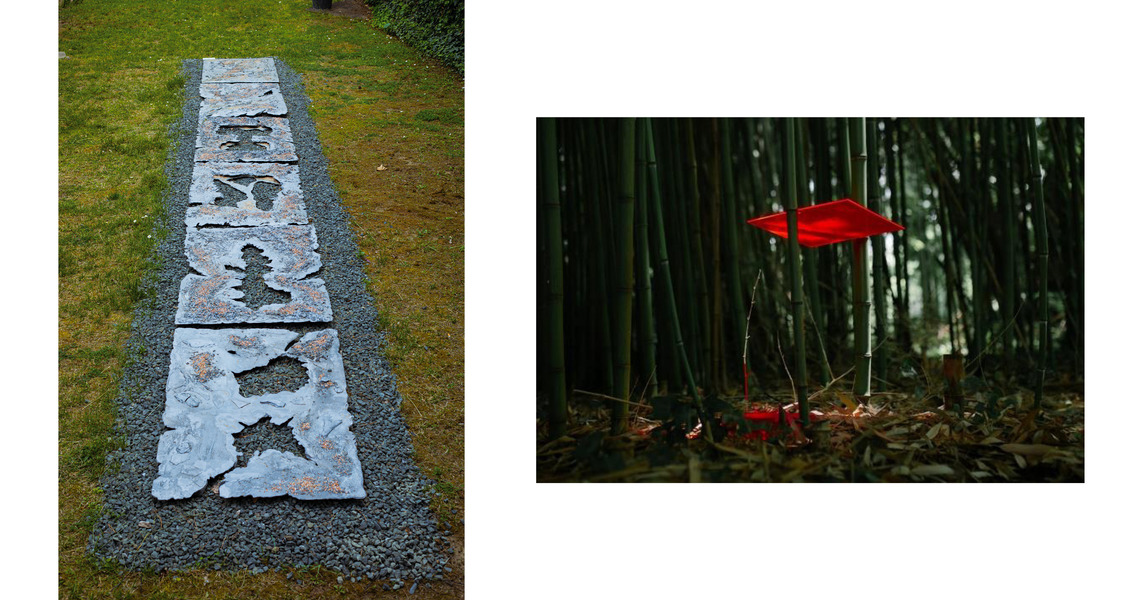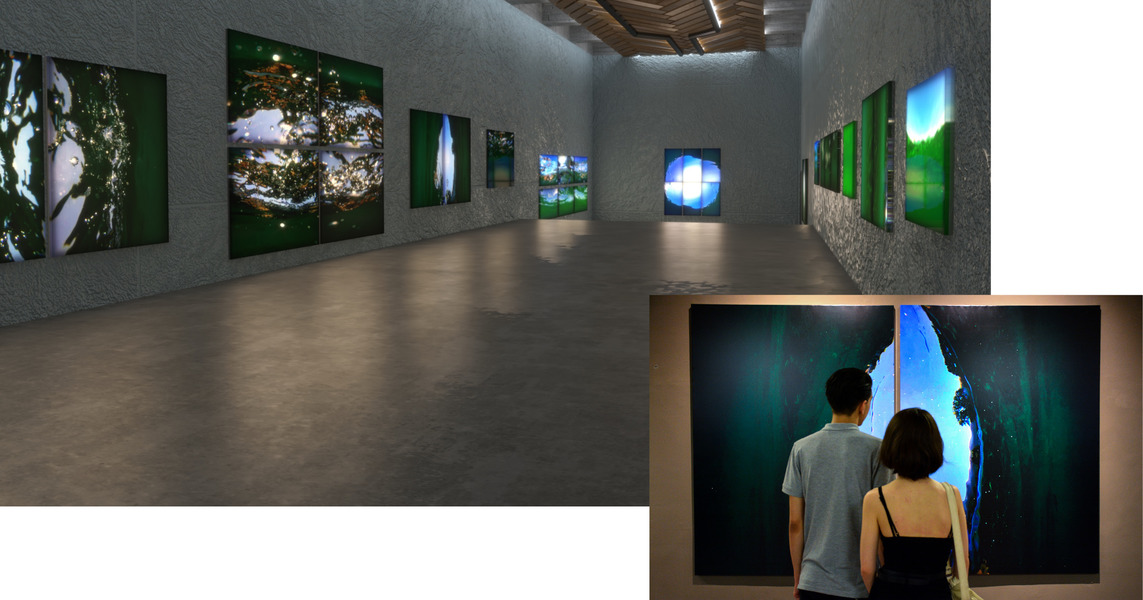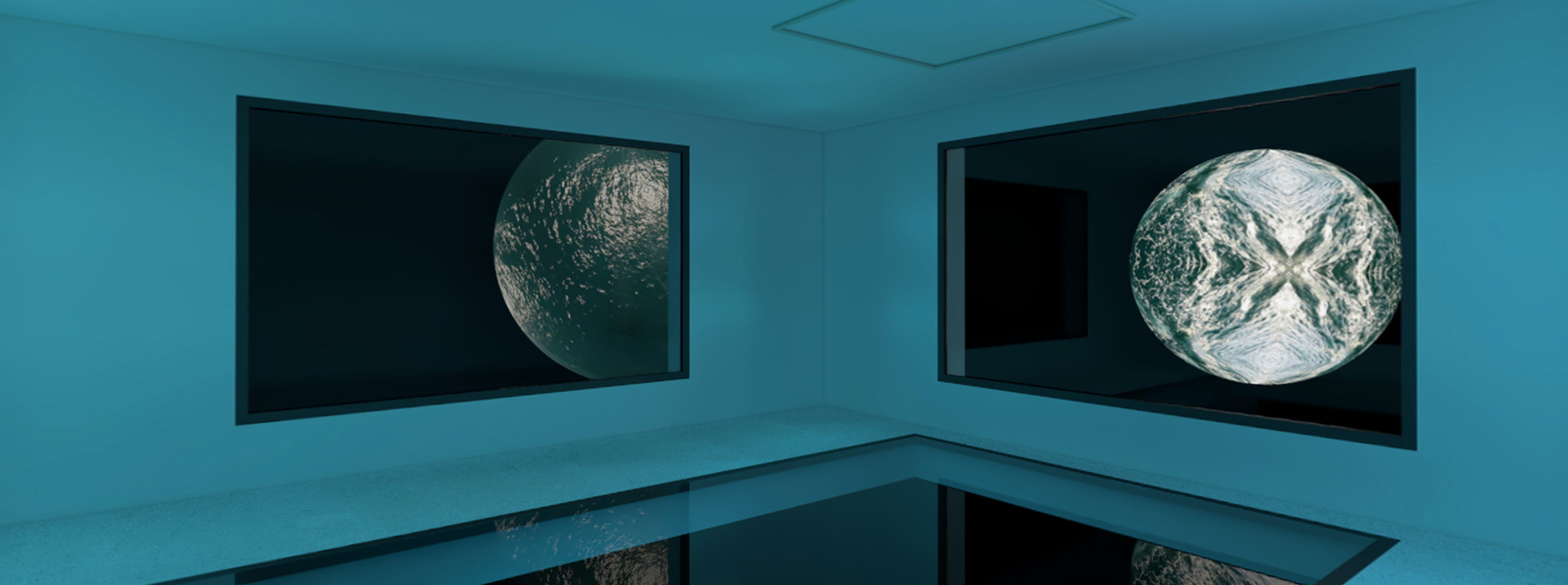Igor Tanevski talks about his artistic practice focused on topics about nature, new technologies, and the principle of cooperation
Published on: 17.06.2022
The conversation took place in Igor Tanevski's studio in Skopje on December 16, 2021, within the PrivatePrint Meets program and was continued on May 7, 2022, through electronic communication. Igor Tanevski talks about his artistic practice, which includes collaborations with different profiles of artists and collaborators, as well as our collaboration at the exhibition Flowing within PrivatePrint VR Studio 2022.

Igor Tanevski
Your practice so far includes works in physical space, but you work in digital space, as well. Tell us more about your way of working and what is most important to you when working on your concepts?
When I work, I don't see them as two different things; one is digital, and the other – is physical space. They simply exist parallelly as technology and technique that allow me to express and continue my interests. In my work, I have enjoyed collaborations with people excellent in their field, such as Aleksandra Kostadinovska, who works in photography, or with the engineer and designer Milan Mitev, with whom we work on current projects.
It's great to work with other people with different creative energies and impulses, inspiring and complementing the work. The collaborative spirit is essential for my work, whether when I work as a curator or in my independent art projects.
What do you think about cooperation as a form within our art scene?
Cooperating can help our artistic practice. Working in a community with a creative team proves productive and humane. We have that tradition from the time of Yugoslavia until today, of creating artistic groups, for example. So far, present were the issues of lack of art market and the non-functioning institutions. Still, today, I think the Internet opens various opportunities for communication and interaction with a broader audience and the international scene. So, we see that the last few years have brought some changes into that field.
You have your studio, your own workspace. What role does that play in your work?
Ever since University, I have kept that practice of having a studio. I get up in the morning, go to work, and stay there until I finish. I also work here on a computer if I ever need to do some applied work. My studio is a crucial part of my artwork.

Igor Tanevski, "The Relation between the Possibilities of Love," Biennial of Young Artists, MoCA-Skopje, 2018
At the Biennial for Young Artists in 2018 at MoCA-Skopje, he presented the installation The Relation between the Possibilities of Love. Tell us more about that installation.
Creating that work was spontaneous and started while I was still studying. A professor donated those plants to the faculty, and the process of replanting and planting took place in my faculty studio. I have had this practice since I was a child from my parents, probably, as a kind of sustainability or pure affinity for plants. The video footage that is part of the same installation was also created spontaneously. I developed them and did not know what exactly I would do with them until the Biennial.
In any case, it was important for me to show my fascination with life. The idea started from the fact that we live in a time when humans do everything to control natural growth and control nature. On the contrary, I set the fascination with life and nature's autonomy in this work. In it, I want to draw and emphasize that man should cooperate with nature. The natural sciences talk about the phenomenon of appearance, collective properties, about cooperation, as opposed to the phenomenon of competition. The most adaptable survive, the cooperative one is the most adaptable, in my opinion.
The process, while the exhibition was open, was also interesting. I was there every two or three days for two months to maintain the plants. And that was part of the project: during the Biennial, many plants sprouted, took root, grew, and so on.
How do your other projects in recent years build on this?
The Way, a work exhibited within the exhibition The Art of Boredom, refers to geological surfaces or specimens from Earth in a contaminated and destroyed condition. At the same time, it points to the ground of other planets and the path to future colonization of other spaces. The journey that promises to expand our spectrum of adaptation and evolution is to understand how precious life on Earth is and to change our way of life. The idea was to place the work on grass that would grow through and around it, to be exposed to various weather changes, such as snow, rain, sunny weather, and vegetation that would complement it. The Relations project, on the other hand, expresses my research into the relationship between land, flora, and industrial, machine-made objects implemented by humans - our interventions and modifications that we make in nature, the things that we leave behind. The initial presentation is in collaboration with the photographer Aleksandra Kostadinovska as a photo-documentary project realized in the Botanical Garden in Skopje.

Igor Tanevski, (left) "The Way," group exhibition "The Art of Boredom," EU Residency, Skopje, 2021 and (right) "Relations," an intervention in the Botanical Garden in Skopje, 2019 (photo: Aleksandra Kostadinovska)
Who are your examples? What do you read, and what interests you in art or other disciplines? Which authors?
Beuys, Yves Klein, Smithson, the Landarists. Also, the Renaissance authors like Leonardo, not only because of the works; they used to think about matters outside of art and perfectly technologically applied them in the art of their time. Because I believe ecology today needs synchronicity between the sciences and art. I think that the future will be like that. It will open more jobs and collaborations and be fruitful for the planet Earth and humanity. There will be no divided groups, no aggression, and we will not have so much waste and pollution. In that context, art will remain engaged in producing aesthetic values and experience. Art, in my opinion, will remain to create a system of aesthetic values through which we will try to reach the collective consciousness, to make a change in the experience of the other. As Duchamp says, the work is 50 percent completed by the viewer. If so, there must be some exchange of values between the work and the viewer, both sensory and supersensory.
What are you currently working on?
I work on the Horizon project, which resulted from spontaneous videos recorded while swimming or photographing at Lake Ohrid. Horizon started in 2019; the project was exhibited as a whole, consisting of large-format plotter prints, in the Museum of the City of Skopje. The work reflects on the different states of the water phenomenon through different perceptions or experiences on the surface where water meets the sky. In 2020 the project was post-produced for virtual presentation using V-Ray renders in collaboration with Milan Mitev. While we are currently working on a new series of works I recorded in 2021, we are in the process of post-production and presentation on Horizon 2.0.
The video frame has become an expressive tool for me, as a source for extracting information, on which I additionally intervene, manipulate, or further process the computer. Through it, I can compose a different visual or spatial perception.

Igor Tanevski, "Horizon" project, (left) virtual presentation in collaboration with Milan Mitev, 2020 and (right) exhibition in the Museum of the City of Skopje, 2019
The use of techniques and new technologies in your works is multifaceted. It can be seen within the technical creation of the work and its conceptual setting. As a representative of the new generation of artists, for whom technology is an everyday working tool, how do you see the latest technologies and their use in art?
Digital technologies are a fundamental part of my practice, so by producing and presenting work, I can change how it is reproduced and represented. I think new technologies and social networks are an excellent opportunity to create a wider audience around artists; they are also a great opportunity for another additional way of audience interaction with works of art. Technology is part of our everyday life and is a working tool constantly changing and reflecting the time in which we live.
You also worked with us as part of our VR Studio 2022 virtual exhibition program. So, in this context, how does the work in our virtual space fit into your artwork so far? Through the exhibition Flowing, can you compare the experience of working in virtual and real space?
Working in virtual space has opened up new possibilities and approaches to a different visual expression from my previous thinking and presentation in the material environment. I spend a lot of my time studying and applying this technology.
There is a big difference between working in physical and virtual space, especially since the expression in virtual reality requires special persuasiveness, technical knowledge, and cooperation with quality and well-informed team of people. I am at the beginning of the research of virtual possibilities, while the project "Flowing" opened new exciting challenges for me in the future.

Igor Tanevski, "Flowing" virtual exhibition, PrivatePrint VR Studio 2022
The idea of VR Studio is to be a collaborative project. Something that again naturally connects to your practice so far. The exhibition does not exist outside the virtual space and is created between the artist, the designer, and the curator. What do you think about the opportunity for this kind of collaboration? How do you see these opportunities for extraordinary collaboration?
Teamwork and a collaborative approach are attractive opportunities that lead to something completely different from what you would produce and present yourself. I am grateful for working with people who are great at what they do, who support the vision, and who contribute to the big picture.
The photographs of the works and exhibitions, courtesy of the artist
--
PrivatePrintMeets is a series of meetings with emerging artists from N. Macedonia and is part of PrivatePrint's project activities funded by the Prince Claus Network Partnership programme.
VR Studio 2022 is co-financed by the Ministry of Culture of the Republic of North Macedonia and made possible through our activities in the PrivatePrint Meets series funded by the Prince Claus Network Partnership Programme.